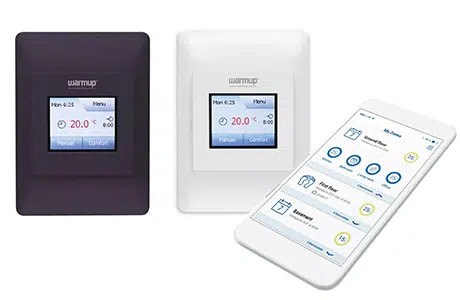
What is the best flooring material for underfloor heating?
It’s always important to ensure that you have flooring material for underfloor heating which helps transfer heat to the floor surface from the UFH without a problem. In general, engineered wood, ceramic tiles or stone tiles are actually very efficient when it comes to heat transfers, and they are known for being thermally conductive. But these are not the only options, there are many others to check out, and all of them are versatile.
When you choose flooring material for underfloor heating, the main focus has to be on quality, value and getting the best results for your money. We are firm believers that investing in the best flooring material for underfloor heating is a great way to not only maintain stellar thermal conductivity but also prevent any low-temperature issues that can sometimes arise. We recommend avoiding any rush and making sure that you test out different materials in order to find the right one that suits your needs.
With help from the best flooring material for underfloor heating, you can avoid any issues, while making sure that the entire process is working as expected and without a hitch. It’s definitely worth giving it a shot and going for materials that work great with hard surfaces, as those are the ones that deliver the best results.

The main difference between different flooring materials for underfloor heating and their suitability for use with the system is the material’s thermal conductivity, meaning how quickly and efficiently heat generated transfers to the floor surface. The best flooring for underfloor heating is flooring with good conductivity as it heats up quicker, gives more heat output and is more efficient to run. However, this does not mean that less conductive materials could not be used with underfloor heating.
The best type of flooring to use is undertile heating. However, a compatible radiant heating system can be found for almost every floor finish.
With any flooring type, you choose, including proper insulation will make the conductivity better.
Share this post
Related Posts


Take the test – Is your Asthma under control?

Electric undertile heating: your information guide


